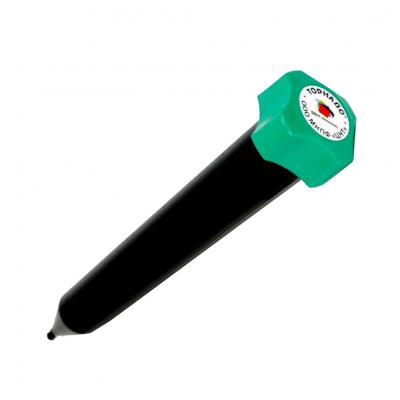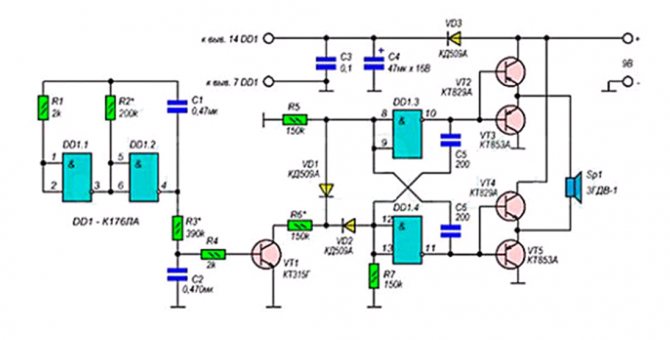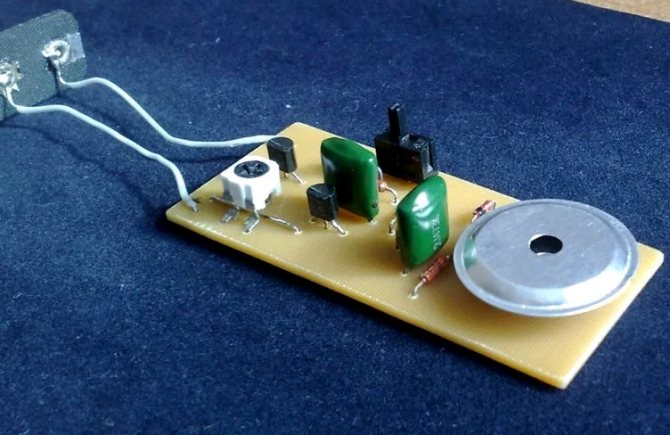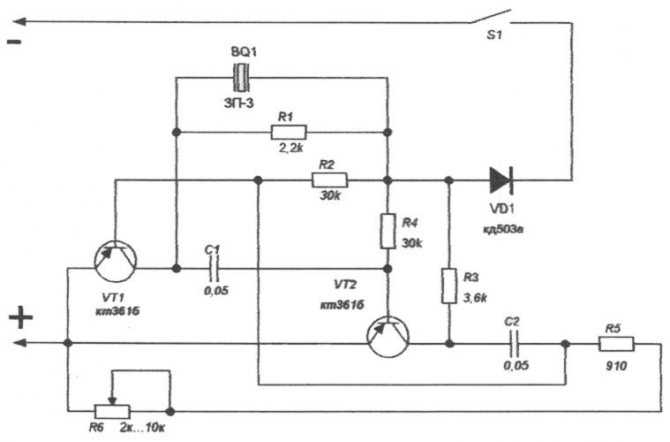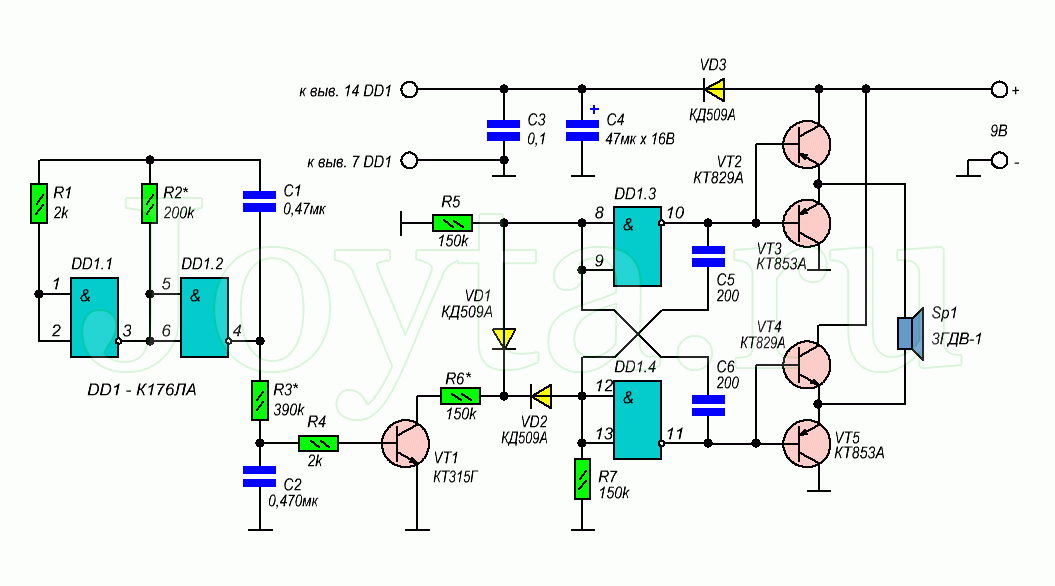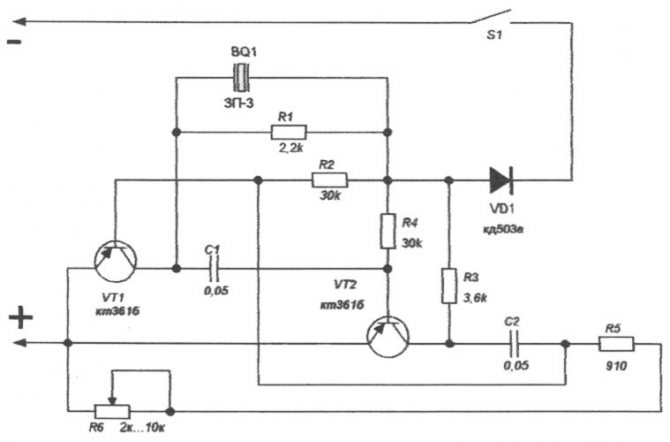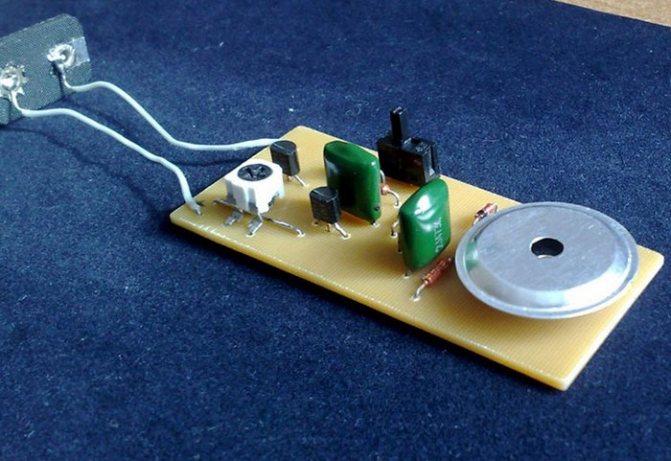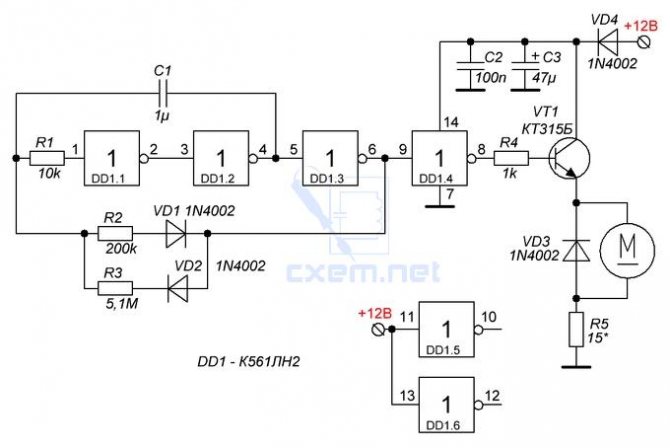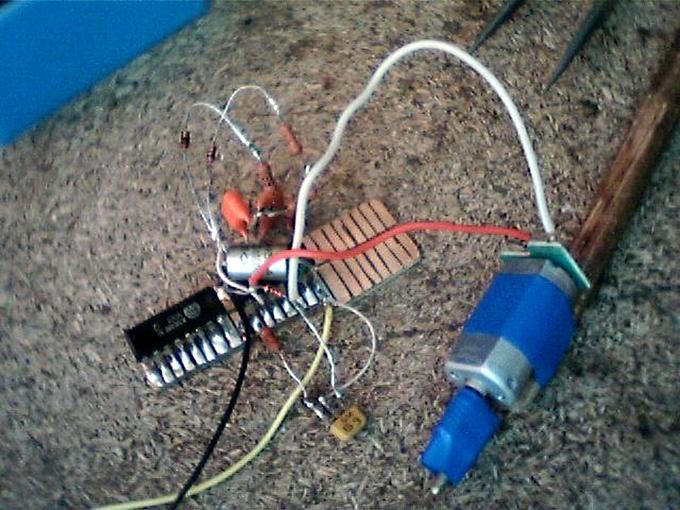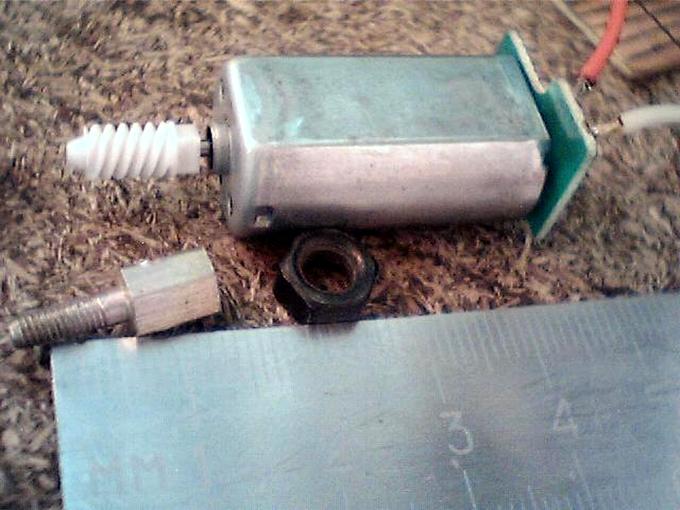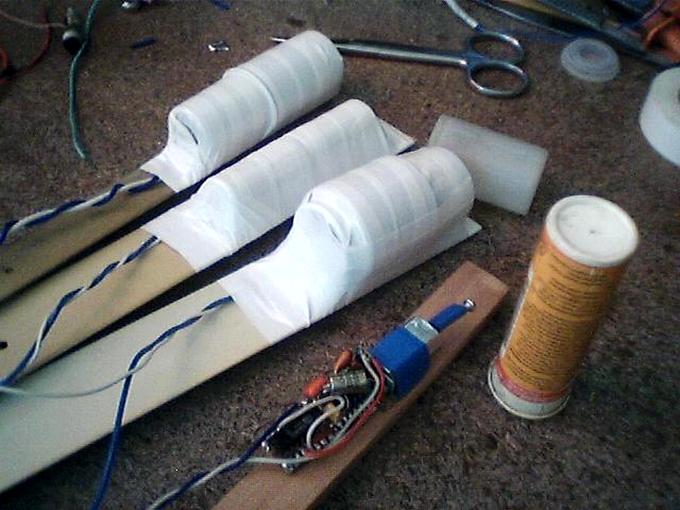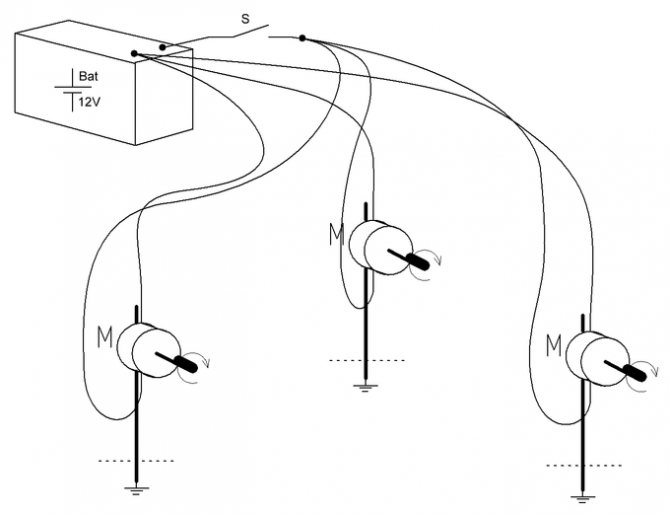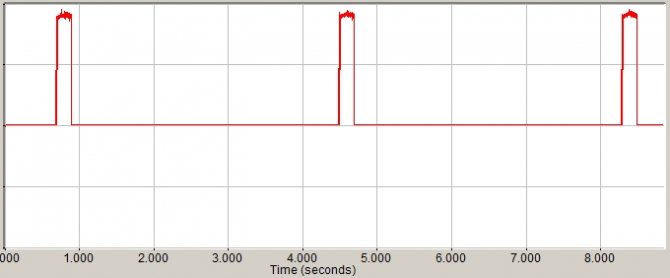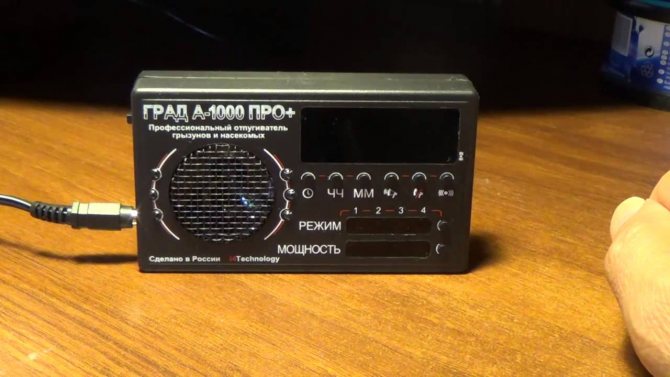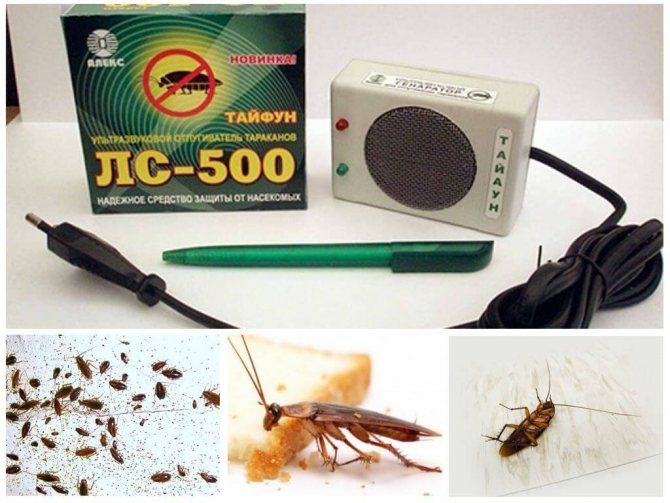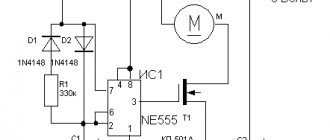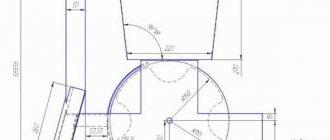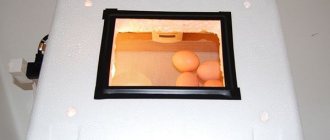The main purpose of the repeller is to combat moles in summer cottages, lawns, vegetable gardens, flower beds. Electronic mole repeller "Tornado OZV.01" is completely safe for people, plants, beneficial underground insects and worms and is the most optimal and environmentally friendly means for fighting moles.
Tornado OZV.01 is necessary for use in open areas, therefore the repeller is waterproof, protected from rain and snow.
RUB 1,050 | Mole repeller (anticrot) Tornado OZV.01 Electronic earth pest repeller antichrot Tornado OZV.01, designed to protect land from rodents and pests (moles, shrews, ground squirrels, rats, vole mice, bear, etc.). more >> |
How it works
The rat and mouse repeller emits sounds at high frequencies that are not perceived by humans, and rodents feel ultrasonic waves.
The task of the apparatus is to create sound vibrations with such frequencies and power that are perceived by rats and mice (frequencies from 30 to 70 kHz).
Ultrasonic devices can only act on the area of a separate room, since ultrasonic waves do not pass through walls and floors. Electromagnetic radiation penetrates walls; metal plates and objects are an obstacle for them.
Ultrasound, reaching any surface, is reflected from it. Hence, we can conclude that one ultrasonic repeller for several rooms in the house will not be enough. There are a large number of such devices on sale, but they are not cheap, so it is more economical to assemble such a device with your own hands.
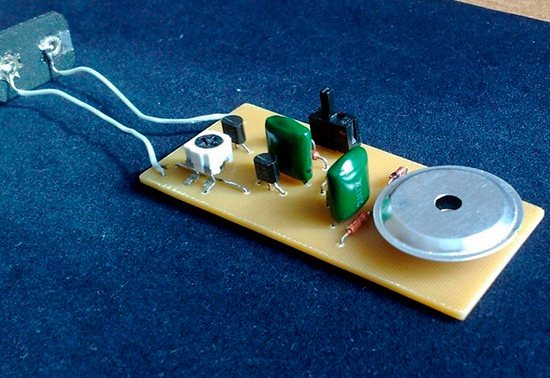

Details of
Instead of the BA1 telephone capsule of the TK-67-NT type, similar capsules of the TA-56M, TA-56, TON-2 or TG-7 type with a winding resistance of about 60 ohms can be used. Diodes, capacitors and resistors will fit any type.
Diodes, capacitors and resistors will fit any type. Any npn transistor will do, but better with minimal voltage drop between collector and emitter. In this case, the radiated power of the sound signal will be higher without increasing the current consumption of the mole repeller.
The D1 chip of the K561LE5 type can be replaced with a foreign analogue of the CD4001A, and of the K561IE16 type with the CD4020B chip.
Making a device at home that scares pests
The creation of such devices does not require special skills and special knowledge; any novice radio amateur will be able to assemble them with his own hands, relying on the attached instructions and diagrams.
For this you will need:
- ordinary soldering iron,
- details R7, R5, C6, C5, DD1.3, DD1.4.
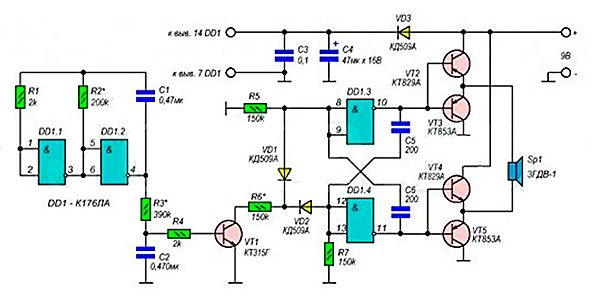

Using a soldering iron, a symmetrical multivibrator is assembled from the parts, which is the basis of the entire apparatus.
The frequencies of the emitted ultrasonic waves can be adjusted by adjusting the generator. The signals emitted by the generator are fed to a device that amplifies their power.
The emission of ultrasonic waves occurs due to the operation of the element Sp1.
You can calculate the strength and frequency of vibrations using the formula F = 1 / (R5xC6 + R7xC5).
To assemble a more complex device with your own hands, capable of constantly changing automatically the range of ultrasound oscillations, you will need a higher level of skill and skill. It can be done based on the proposed scheme:
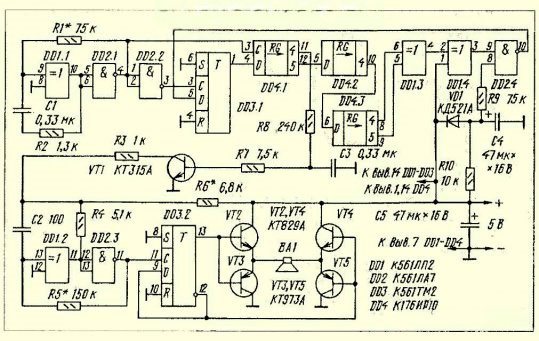

The frequency modulation of the emitted ultrasound occurs at a specified time interval. Setting up the apparatus is carried out in stages and begins with determining the operating frequency of the generating element.
What you need to know
When assembling a device of this type, do not expect that it will be possible to get rid of rodents as soon as the device is connected and starts its work.
In kitchens and pantries, where there is something to profit from small pests, it is worth installing more powerful appliances than in other rooms. In such rooms, the fight against mice and rats can take even two months. Where there is no food available, the process of getting rid of mice will go much faster and will take about two weeks.


To combat rodents in unheated basements and storerooms, you need to assemble the device using radio components that can function at low temperatures.
Pets can sense some of the frequencies emitted by the repeller. In this case, they feel anxious. In order for pets to stop feeling the effects of ultrasound, it is necessary to change the frequency of oscillations emitted by the device. If such actions did not lead to the desired result, you will have to purchase a factory-made ultrasonic repeller. True, many devices of domestic manufacturers also operate at frequencies audible by pets, but there are models of foreign brands that do not affect animals.
Having studied the reviews of people who have already managed to use purchased and homemade devices, you can decide on the choice. Of course, it is possible to make such a device with your own hands using diagrams and necessary elements from a radio store, but this requires certain knowledge.
The penetration of mice and rats into the house becomes a big problem for its inhabitants. Rodents not only spoil food, things and furniture, rats and mice are carriers of dangerous diseases. There are many ways to combat gnawing pests, from chemicals from mice and rats to folk recipes. An excellent alternative to all these methods can be an ultrasonic rodent repeller, whose work is to emit high frequency sound waves. Among the popular brands stand out devices Clean House, Pest Reject. Given the rather large cost of the device, many craftsmen have learned how to assemble an ultrasonic rat and mouse repeller with their own hands.
Printed circuit board
Content
Moles are one of the main threats among underground rodent pests for horticultural activities. Rodents are mainly fought by mechanical and chemical methods. But recently, electronic devices have appeared that make it possible to combat rodents in more humane methods, driving moles and other rodents from garden plots with the emitted alarming sounds.
There are many types of electronic devices on the market, but they are expensive and do not always live up to expectations. You can only be convinced of the effectiveness of the purchased electronic device for scaring away moles after its trial operation.
The proposed version of an electronic device for scaring away moles is assembled according to the original electrical circuit, tested in operation for two years and showed high efficiency. In the scheme, in contrast to industrial designs, the possibility of changing the frequency of the emitted signal is easily realized, which excludes the addiction of moles to the emitted sound.
Unprofitable neighborhood - rats, mice, moles, shrews, gophers, "kitties", chipmunks, bears.
Various types of rodents bring us a lot of losses, troubles, and sometimes diseases. This is an unwanted neighborhood, which we are trying to get rid of in various ways - we spend money on the purchase of poisons, traps, traps, chemicals, biological products, etc. , but our efforts are often in vain.
Agree, when you take care of plants, you see how they grow, bloom ... and "THEY" come, What to do?
There are many ways to control rodents. In this article we will talk about a newer and safer, and in a monetary sense and economical method of dealing with our smaller "friends".
I want to present to you a number of schematic diagrams for scaring away rodents. (1 - underground rodents, 2 - rats, mice, etc.)
1. Underground rodents (moles, shrews, bears) As you know, they use their heightened hearing to pick up soil vibrations. The vibration of the soil warns rodents of danger and forces them to flee. We can use this fact.
It is enough to create a sound vibration in the soil with a frequency of 100 to 400 Hz. As a radiator, you can use a speaker from an old low-power receiver. The emitter is buried to a depth of 30-50 cm in the ground.
Let's start with the simplest devices. For their manufacture, the most common parts are used.
Option # 1 You can apply a sound multivibrator on PNP or NPN transistors. With a supply voltage of 4.5 - 9 V, its power is sufficient to propagate a signal over 300 - 1000 m2. The disadvantage of this design is constant work. In theory, the signal should come in periods and you will have to turn the multivibrator on and off from time to time.
When using the listed parts, the signal frequency is about 200 Hz. Speaker B1 - 0.25 W or 0.5 W.
Fig. 1.R1, R4 - 1 com; R2, R3 - 39 lm; R5 - 510 ohm; C1, C2, C3 - 0.1 μF; V1, V2 - MP 26 or MP42; V3 - GT 402, GT403.
Fig. 2.R1, R4 - 1 com; R2, R3 - 39 lm; R5 - 1kom; C1, C2, C3 - 0.1 μF; V1, V2 - KT315; V3 - KT815
Option # 2 As I noted above, the signal should be emitted periodically, so we emit the movements of the earth's layers as before an earthquake.
etc. ". The schematic diagram is shown in Fig. 3.
Fig. 3.Details: Rp - 100kΩ; R1, R4, R6, R9 - 1 com; R2, R3 - 47 kohm; R7, R8 - 27 lm; R5, R10 - 510 ohm; C1, C2, - 500 μF; C3, C4 - 0.22 μF; C5 - 0.1 μF; V1, V2, V4, V5 - MP 26 or MP42; V3, V6 - CT 814, CT 816; VD1, VD2 - AL 307; B1 - 0.5 or 1 W with a resistance of 8 ohms.
Let's see how the electronic "stuffing" of the scarer works in Fig.3. The device is based on multivibrators. One of them on transistors V4 and V5 generate oscillations with a frequency of about 200 Hz. Transistor V6 - amplifies the power of these oscillations.
As you can see from the diagram, the multivibrator on transistors V4, V5, V6 is the load of the right shoulder of the multivibrator, assembled on transistors V1, V2, V3. Thus, power is supplied to this multivibrator at the moment when the transistors V2, V3 are on.
At this time, the resistance of their emitter-collector sections is very small, and the emitters of transistors V4, V5 and V6 are practically connected to the positive terminal of the supply source. When the transistors V2, V3 are off, the multivibrator does not generate.
We suggest you familiarize yourself: Why you can't kill bats
In other words, the device on transistors V1, V2 and V3 plays the role of an automatic power switch for the multivibrator on transistors V4, V5, V6. The variable resistor Rp is used to change the length of the pauses. LEDs VD1, VD2 - used for visual indication of "work-pause" modes.
In the repeller, you can use any low-power transistors, for example, the MP series of the p-n-p structure, KT 361, KT 203, KT3107, etc. The KT 816 transistor can be replaced with GT402, GT403, P201, P214, etc. As a power source, you can use solar panels, two 3336 type batteries connected in series or from a mains power supply with an output voltage of 4.5 - 9 V. This device starts working immediately and does not require additional settings.
Option No. 3 The underground rodent repeller can be assembled on a very common K155LA3 microcircuit using an intermittent signal generator circuit.
And to amplify the sound, use a push-pull transformerless power amplifier as shown in Fig. 4.1a and 4.1b or using a sound transformer from low-power receivers as shown in Fig. 4.2 The supply voltage of the repeller is 4.5 - 5V.
The principle of operation of the intermittent signal generator is similar to the device described in option 2. It also contains two generators, one of which forms the frequency of the sound signal we need, it is assembled on LE AND NOT DD1.3 DD1.
4, the second controls the operation of the first and is assembled on LE AND NOT DD1.1 DD1.2.
The frequency of each generator depends on the capacitance of the capacitor and the resistance of the resistor. For the generator on LE AND NOT DD1.3 DD1.4 - C2, R2 and, accordingly, for the generator on LE AND NOT DD1.1 DD1.2 - C1, R1. The frequency of the generated pulses is determined by the relationship F = 1 / T; where T≈2.3СR, subject to the limiting condition for choosing the resistance of the resistor 240 Ohm
Figure 4.1a
And so let's dwell on the details of the device in Figure 4.1a.
Dynamic head 0.25 W with a voice coil of 8 - 10 Ohm. To increase the power, you can use transistors, for example V1 - GT404, V2 GT402. Power supply 4.5 - 5V
Fig.4.1b
The variant in Fig. 4.1b differs from the version in Fig. 4.1a with a more powerful audio output amplifier assembled on three transistors.
Details: microcircuit K155LA3 or K131LA3, C1 - 2200 uF, C2 - 4.7 uF, C3 - 47 - 200 uF, R1-R2 - 430 ohm, R3 - 1 kohm, R4 - 4.7 kohm, R5 - 220 ohm, V1 - KT361 (MP 26, MP 42, kt 203, etc.), V2 - GT404 (KT815, KT817), V3 - GT402 (KT814, KT816).
Dynamic head with a power of 0.25 - 0.5 W with a voice coil of 8 - 10 Ohm. Power supply 4.5 - 5V
Fig. 4.2
In the variant shown in Fig. 4.2, a TV-12 transformer is used as an output amplifier (you can use a transformer from any small-sized transistor receiver). Dynamic head 0.25 W with a voice coil of 8 - 10 Ohm. Power supply 4.5 - 5V
Option No. 4 In the above circuits of intermittent signal generators on the K155LA3 microcircuit during the driving circuit, include capacitors of larger capacity and resistors of low resistance, which limits the range of smooth adjustment of the control pulse repetition rate. In scarers, the diagram of which is shown in Fig.
Parts used: microcircuit K155LA3 or K131LA3, C1 - 100 μF, C2 - 4.7 μF, R1 - 260 Ohm, R2 - 430 Ohm, R3 - 1 kohm, Rp -30 kohm, V1 - KT361 (MP 26, MP 42, KT203, etc.), V2 - GT404 (KT815, KT817). Driver with a power of 0.5 W with a voice coil of resistance 8 - 10 Ohm. Power supply 4.5 - 5V.
Option # 5I is another device on a fairly common foreign microcircuit from the 4000 series. This design is taken from the book "135 RADIO AMATEUR DEVICES ON AN OTHER MICROCIRCUIT" by Newton S. Braga. (Project 25 Sound signaling device with powerful output (E, P) p. 73)
Although the article relates to an alarm, this device for scaring away underground rodents perfectly fits our topic. The design has a number of positive aspects. Let's consider in detail the principle of operation of the device.
The output stage is based on transistors; they are capable of delivering several hundred milliwatts to the loudspeakers. As in the previous diagrams, the device consists of an audio tone generator on LE DD1.2 and a control generator on LE DD1.1.
You can experiment by changing their values according to the purpose of the device. The schematic diagram of the device is shown in Fig. 6.
The current consumed by the device is about 50 mA. The supply voltage of the microcircuit is 3-9 V. To improve the acoustic performance, the loudspeaker should be placed on a plastic surface or in a small enclosure. Microcircuit CD 4093, domestic analogue of K561TL1 Fig.
Device from mice
How does it work
The work of an ultrasonic repeller is based on the generation of signals that are completely inaudible to a person. For rodents, such sounds cause great discomfort, affecting their nervous system. The frequency of scaring off mice ranges from 30 to 70 Hz. It changes periodically, which is not addictive in rats and mice.
Ultrasonic scarers are able to scare away not only rats and mice, they are also effective against harmful insects (cockroaches, ants).
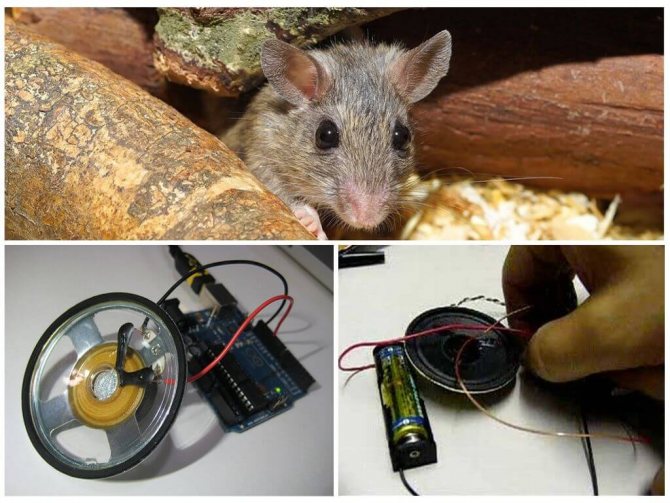

There are also devices that emit electromagnetic waves. Unlike previous devices, they are able to penetrate interior panels, scaring away pests at a considerable distance.
Ultrasonic scarers are very convenient and economical, as well as have a long service life.
Ultrasound and pets
You should know that electromagnetic scarers are dangerous for all pests, including domesticated ones, for example, guinea pigs, rats, hamsters.The devices operate from the mains, spreading throughout all rooms where there is wiring. The device effectively acts on rodents and insects, including cockroaches, mosquitoes, fleas, bees, ants.
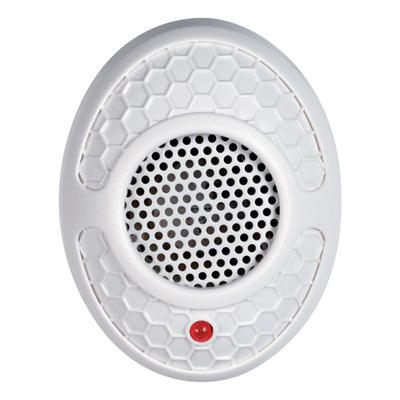

What do you need
You do not need to spend money on factory devices, since it is quite possible to make a scarer of mice and rats on your own. The device can be made on the ne555 or ne556n timer. Microchips will produce a signal that will scare off rodents. To assemble an ultrasound device, you will need the following parts:
- resistors R1, R2 (for adjusting the ultrasound output level) - 2 pcs.;
- resistors R3, R4, R5 (to reduce the voltage in the mains) - 1 pc .;
- capacitors C1, C2, C3 (to form a frequency circuit) - 1 pc .;
- transistors of the brands GT404, KT361 and GT402 (to form a frequency circuit) - 1 pc .;
- diode - to protect the device in case of incorrect connection to the network;
- piezo emitter - for producing an ultrasonic signal;
- speaker;
- battery;
- toggle switch to turn the device on and off.
The diagram of the ultrasonic rodent repeller is presented below.
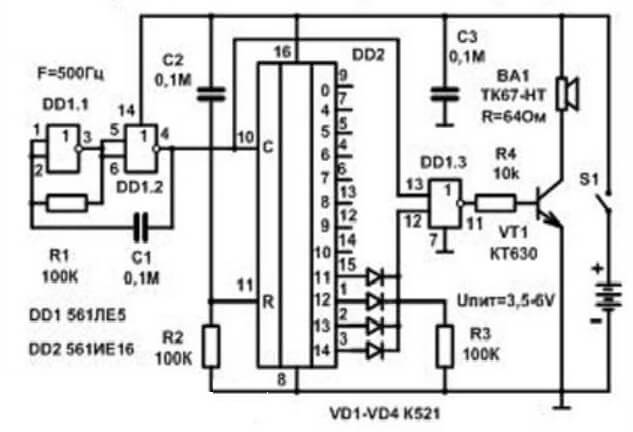

Rodent repeller electrical circuit
Printed circuit board
Due to the lack of the possibility of manufacturing a printed circuit board for a mole repeller using chemical technology, a mechanical method was used to remove sections of copper foil from foil-clad fiberglass.
The location of the radio components on the printed circuit board of the mole repeller is shown in the photo below.
The appearance of a printed circuit board for production by a photochemical method and the location of radioelements are shown in the photo below.
The board can be made of 1.5 mm thick fiberglass foil on one side.
A visitor to the site, who introduced himself as San Sanych, kindly provided his version of the rodent repeller, diluted in a graphic editor for the layout of printed circuit boards Sprint-Layout 3.0R, for which many thanks to him.
Build rules
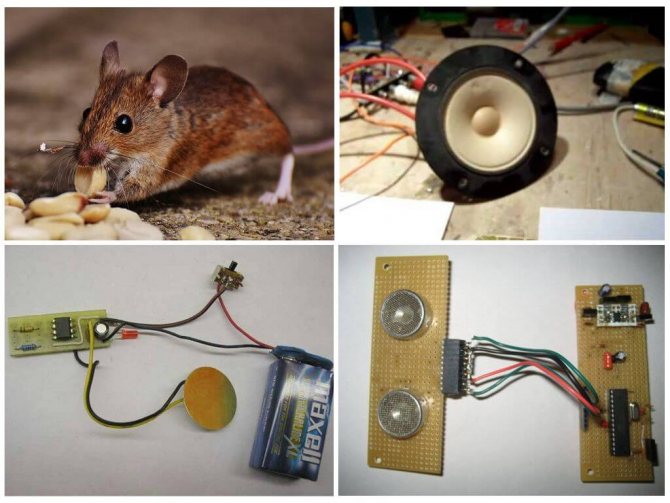

DIY ultrasonic rat and mouse repeller
The scheme of the scarer of rats and mice is drawn up on a textolite. In the absence of such, everything is connected by wires. Separate wires lead to the battery and speaker. The assembly sequence of the repeller circuit is as follows.
- Checking the drawing.
- Stripping wires, processing them with tin and rosin.
- Sequential soldering of parts.
- Power supply connection.
- Testing.
- The homemade device is placed in a suitable case or box, in which holes are made in the area of the speaker.
You should not expect an instant result from the operation of the device. The effect will be noticeable after 2-3 weeks of continuous operation of the electronic device. It is possible to achieve a full-fledged result in the fight against rats and mice after 2 months.
When using an ultrasound device against mice and rats, remember that ultrasound is bounced off a hard surface and absorbed by a soft one. Therefore, its use will be more effective in a room not cluttered with objects. To get rid of mice and rats in an apartment or a private house, it is necessary to use devices of this type in all rooms at the same time, without giving rodents a chance to move from one room to another.


There are several ways to deal with rodent infestations in your home on your own and at virtually no cost. To make an ultrasonic rat and mice repeller with your own hands, you need almost no expenses other than buying the original equipment.
"Grad A-550 UZ"
A powerful enough ultrasonic insect repeller, which is designed to protect areas up to 550 sq. m.
This ultrasonic insect repeller, reviews of which are only positive, has the following advantages:
- energy efficiency, noiselessness;
- the possibility of autonomous operation and power supply from the network;
- formation of a unique non-duplicating signal.
The device has the following features:
- automatic switching to power saving mode;
- the possibility of fixing to the wall;
- the presence of an improved signal algorithm and pulsating indication of work;
- work with maximum power when connected to an external source.
Applications:
- summer cottages, private houses, warehouses, granaries;
- apartments, elevators, cellars, cafes, etc.
The effectiveness of the ultrasonic repeller
When dealing with pests yourself, there are a few things to keep in mind. Regardless of which method you use, physical, chemical or electronic, you must remember to avoid any pests or rodents at all costs. They can be dangerous as some of them are poisonous. Also, if they feel threatened, they can bite. Rats, mice and bats sometimes carry diseases, and close contact with them can spread the disease. If you use chemicals and the like to get rid of pests, remember that if they are deadly to animals, then in all likelihood they are also dangerous to you.
Do-it-yourself rat and mouse scarer - schemes
The circuitry described here is nothing more than a passive infrared (PIR) motion sensor to keep animals away from your home or garden.
The circuit is based on one readily available passive infrared (PIR) motion sensor. A PIR (passive infrared) sensor is a pyroelectric device that detects motion by measuring changes in infrared levels emitted by surrounding objects. The PIR sensor has elements of a crystalline material that generates an electrical charge when exposed to infrared radiation. Variations in the amount of infrared radiation emitted by an element alter the generated voltages, which are measured by the onboard electronics. The device contains a special filter called a Fresnel lens that focuses infrared signals onto the element. As external infrared signals change rapidly, the built-in amplifier activates the output to indicate actual movement.
The PIR sensor has a range of about 6 meters. This may vary depending on environmental conditions. The sensor is designed to adapt to slowly changing conditions, which typically occur as the day progresses and environmental conditions change, but reacts by making its output active when sudden changes occur, such as when “real” movement occurs.
Ultrasound has a suppressive effect on rats and mice
The PIK sensor module has a 3-pin connection:
- ceramic variable capacitor;
- output;
- short to ground.
The conclusion may differ, so it is recommended to check the factory specifications to confirm the findings. They are sometimes marked on the PCB next to the pins. In addition, the PIK sensor modules also have a 2-pin switch for single or continuous trigger output mode. The two positions are designated as "H" and "L." When the jumper is in the “Retrigger” “H” position, the output remains high when the sensor is reloaded again. In the “L” position, the output goes high and low each time the sensor is triggered. Thus, continuous movement will give repetitive high or low pulses in this "normal" mode.
Popular models
The domestic market offers a wide selection of such devices, which differ in the impact zone, design, frequency, size and cost.
Currently, the following are popular:
- "Tornado-200". This ultrasonic insect repeller operates from the mains, covering an area of 200 sq.m. It can be installed in cottages, garages, basements, warehouses.Works over a wide temperature range. The radiation frequency varies within 18-70 kHz, changing every five minutes. The weight of the device is 150 grams.
- "Tornado-400". Its action extends to 400 sq. m. Weight is - 500 grams.
- "Tornado-800". The device, identical to the previous models, has a working area of 400 square meters. m.
It is also worth highlighting such models as "Chiston", "Tsunami", "WK", "Grad A-500", "Spectrum", "Typhoon", "Thunder", etc.

